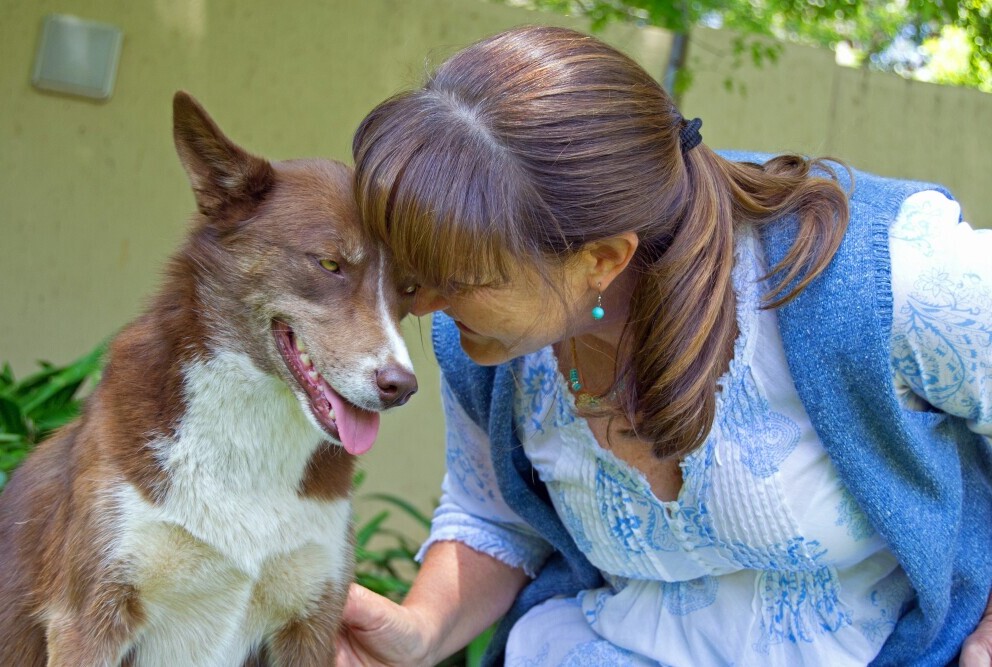
Spotting arthritis in dogs can feel tricky, but those little clues aren’t invisible if you know where to look. Limping or stiffness might just be the most obvious flags. It’s common for dogs with arthritis to show a change in how they walk or even seem stiffer getting up from a nap.
These aren’t always the easiest signs to pick up, especially if they’ve been slowing down for a while. This is why we’ve come to help you figure out how to notice these signs and what you can do once they start showing up.
Weight gain often sneaks up on dogs with arthritis. This isn’t just about too many treats (though we all love giving a few!), but more about them moving less because of discomfort. So pay attention if they aren’t moving as much and gaining weight as a result.
You’ll also want to keep an eye out if your pup seems extra tired. While every dog loves a good snooze, excessive sleeping or just showing less oomph than usual could mean more is going on. If they just want to sleep all the time and not move, this could be a sign.
Behavioral changes are another compass pointing toward arthritis. If your dog seems grumpy, less likely to play, or just plain not interested in their usual chase-and-fetch games, arthritis pain might be the culprit. A dog that used to bound up the stairs but now hesitates to climb might not just be getting stubborn in their old age.
Keep a gentle hand on those spots that spark pain – your dog will let you know if it’s uncomfortable. Paying attention to yelps or sensitivity when touching certain areas is key to understanding their physical state. Observing how they react during walks or when moving around can be a clear picture of where they stand in terms of pain and discomfort.
Lastly, some dogs are more predisposed to arthritis than others. Larger breeds, for instance, might present signs earlier simply due to their heft. Or, dogs who are entering their golden years might start experiencing aches and pains more prominently. Knowing your dog’s breed and age-related risks can really help to anticipate and manage arthritis before it takes hold.

Diagnosis: How Veterinarians Identify Arthritis in Dogs
Getting a solid diagnosis for your dog’s arthritis means a trip to the vet, where they’ll use a few tools to pinpoint what’s happening. A physical exam is usually the starting point. Your vet will ask about your dog’s symptoms and physically check their range of motion, sensitivity to touch, and overall mobility. Observing these things gives the vet a baseline to work from.
When a vet suspects arthritis, imaging like X-rays is often the next step. These images help visualize the condition of the joints and bones. They can reveal things not visible on the surface, like joint deformities or signs of deterioration, directly pointing to arthritis or other joint issues. This can give them a full picture of any inflammation on their joints.
Blood tests might be part of the process too. While they can’t confirm arthritis on their own, they help rule out other conditions that might mimic arthritis symptoms, like infections or autoimmune diseases. Having a clear picture of your dog’s health is essential for an accurate diagnosis. And this way you’ll be and to pinpoint exactly what’s going on with your pup.
Identifying arthritis early can be a real help for treatment. The sooner you know what you’re up against, the sooner you can start managing it. An early diagnosis doesn’t just open up a broader range of treatment options but can also mean a better quality of life for your furry friend as they age.

Treatment Options: From Lifestyle Changes to Medications
When it comes to handling arthritis in your dog, a mix of lifestyle changes and medication is often the way to go. Adjusting their diet might not be the first thing that comes to mind, but it can help lighten the load on sore joints. Look for food that supports joint health, often loaded with omega-3 fatty acids, which fight inflammation.
Keeping your dog active is essential, but it’s all about hitting the sweet spot. Regular, low-impact exercise like swimming can strengthen muscles without overloading the joints. Consult with your vet to find an activity level that fits your dog’s needs without pushing them too hard.
Medication is another crucial piece of the arthritis puzzle. Vets often prescribe anti-inflammatory drugs to reduce swelling and pain, giving your dog some much-needed relief. Alongside these, joint supplements like glucosamine can keep cartilage healthy and pliable, slowing down the wear and tear process.
People often explore alternative therapies, which can also make a big impact. Techniques like acupuncture or hydrotherapy can boost circulation and mobility, offering your dog a break from the usual routine and some relief from discomfort. Always chat with a vet before starting any alternative treatments to ensure they complement your dog’s current care plan.

Creating a Comfortable Environment for Arthritic Dogs
Setting up a cozy space for your arthritic dog means a few tweaks around the house. Start with their bed. Opt for orthopedic or memory foam options that can offer much-needed joint support and comfort. There are dog beds and pillows that are designed to help arthritic dogs.
Ramps or pet stairs are super useful around the home, especially if getting onto the couch or into the car has turned into a challenge. They eliminate the need for your dog to jump, which can reduce the strain on their joints. This can be a great way to keep them doing things they love that won’t put a strain on their joints.
Consider climate control as well. Keeping your home at a steady, comfortable temperature can help ease arthritis pain. Colder weather tends to stiffen joints, so keeping your dog warm is beneficial. Make sure their bed is in a warm spot or maybe has a blanket.
Pay attention to behavioral adjustments that can make everyday tasks easier. For example, placing food and water bowls at a height that reduces bending can be a simple yet effective change for your pet. Anything that will keep them from putting more stress on their joints.
A consistent routine can also work wonders in keeping your dog relaxed. Less stress equals less pain, so sticking to a predictable schedule can improve their overall mood and health. Reducing household noise and providing a quiet space for rest can further minimize anxiety.
All these adjustments can craft a haven at home, helping your dog cope better with arthritis and enjoy a more comfortable, happy life. And when their arthritis is taken care of, they will be able to do the things they love with you even longer.
